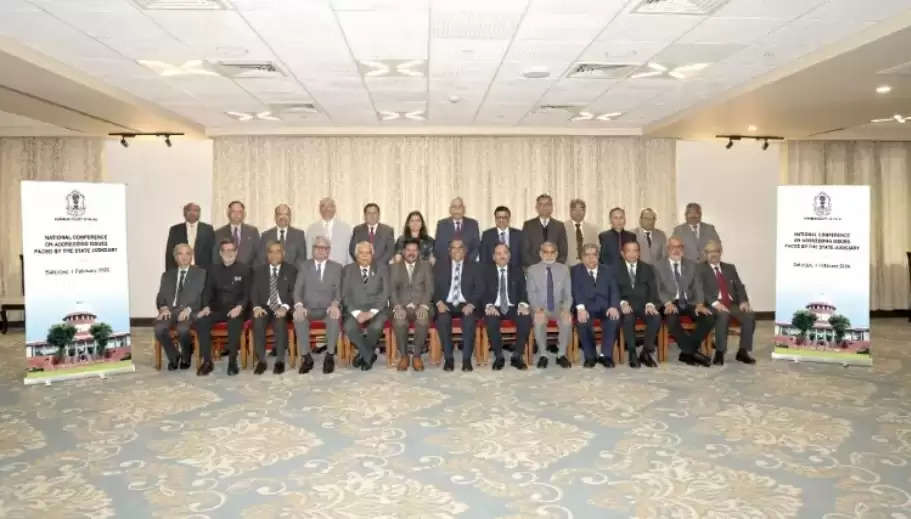CJI & HC Chief Justices Meet To Discuss Evening Courts, Ad Hoc Judges; Supreme Court Holds Conference On State Judiciary Issues
The Chief Justice of India, two senior Supreme Court judges, High Court Chief Justices, and senior High Court judges met to discuss filling vacancies in High Courts, appointing ad-hoc judges, and establishing Evening .
Feb 2, 2025, 21:54 IST

CJI & High Court Chief Justices Meet: Key Highlights
✔ Evening Courts Proposal – Discussion on reducing case backlog through evening courts.
✔ Ad Hoc Judges – Deliberation on appointing temporary judges to expedite pending cases.
✔ Judicial Infrastructure – Focus on modernizing court facilities across states.
✔ Technology in Judiciary – Emphasis on digitization and e-courts for efficiency.
✔ Speedy Justice Reforms – Strategies to enhance judicial productivity and reduce delays.
✔ Collaboration with State Governments – Addressing funding and administrative challenges.
Supreme Court leads crucial conference to strengthen the state judiciary!
The Chief Justice of India (CJI) and Chief Justices of various High Courts recently convened to deliberate on critical measures aimed at enhancing the efficiency of the Indian judiciary. Key topics of discussion included the implementation of evening courts and the appointment of ad hoc judges to address the burgeoning backlog of cases.
National Conference on State Judiciary Issues
The Supreme Court organized a "National Conference on Addressing Issues Faced by the State Judiciary" to engage in meaningful dialogue with stakeholders across the judicial spectrum. The conference featured four technical sessions, each focusing on distinct challenges and potential solutions for the state judiciary.
Key Discussions and Resolutions
1. Evening Courts: The proposal to establish evening courts was a significant point of discussion. These courts aim to expedite case disposal by utilizing extended hours, thereby reducing the existing backlog.
2. Appointment of Ad Hoc Judges: The conference deliberated on appointing retired judges as ad hoc judges under Article 224A of the Constitution. This measure is intended to mitigate the shortage of judges and accelerate the adjudication process.
3. Judicial Infrastructure and Technology: Enhancements in judicial infrastructure and the integration of technology were emphasized to improve court efficiency and accessibility.
Supreme Court's Directive on Ad Hoc Judges
In a landmark decision, the Supreme Court relaxed previous conditions to facilitate the appointment of ad hoc judges in High Courts. The court specified that each High Court could appoint two to five ad hoc judges, not exceeding 10% of its total sanctioned strength. This directive empowers Chief Justices of High Courts to recommend retired judges for temporary appointments, aiming to alleviate case pendency.
Conclusion
These initiatives reflect the judiciary's proactive approach to reforming court operations, enhancing judicial capacity, and ensuring timely justice delivery. The collaborative efforts between the Supreme Court and High Courts signify a commitment to addressing systemic challenges and improving the overall efficacy of the Indian judicial system.
